Solar panels are an almost free way to generate electricity, but in some cases, you don’t want to keep your panels outdoors. This could obviously lead to efficiency issues, which is what I want to investigate and test out in what follows.
The question I’m trying to find an answer to today is: Do solar panels and chargers work indoors?
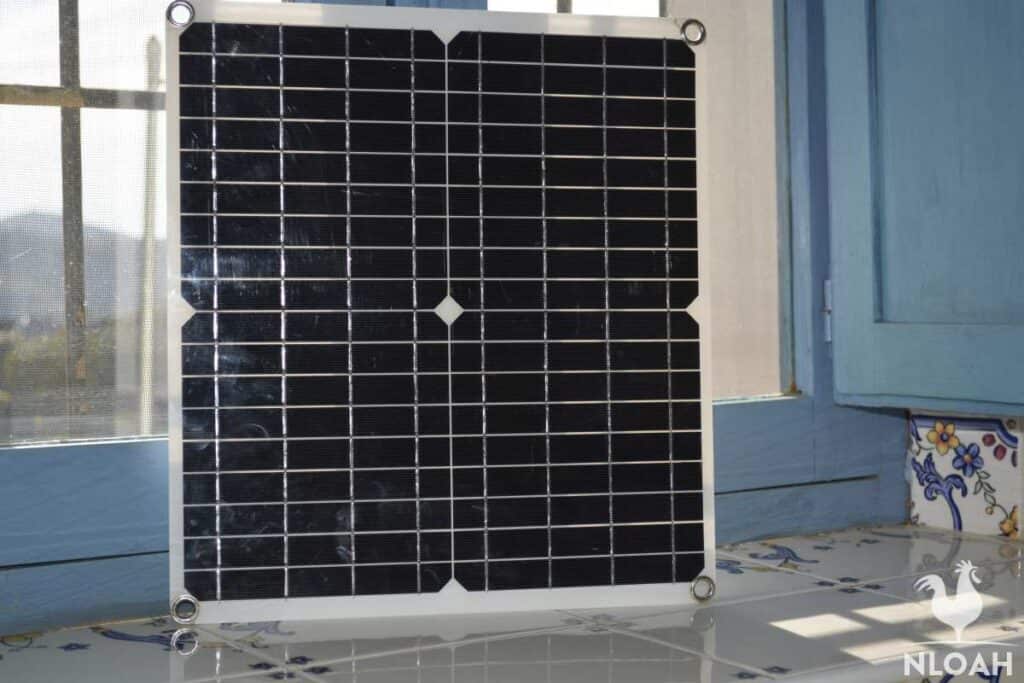
Yes, they can work indoors, although not as efficiently as outdoors. Solar panels are made for outdoor use, but they can work if set up near a window. They can also work under indoor lights, but that’s not efficient at all – or useful.
However, some sources of indoor lighting have a similar spectrum to that of the sun, making it possible to power solar panels inside. Exposed to this indoor lighting, solar panels, and solar chargers can produce electricity.
You see…
Electricity is created by photovoltaic cells that are exposed to light. The light does not necessarily need to be direct sunlight.
It is possible to use solar panels and chargers indoors in two different ways. They can be used by placing them in the light that is entering through the windows. They can also work by exposing them to the light from certain types of light bulbs.
To understand this effect, let’s first look at how they work behind the glass. We can then see how they function when exposed to the light from light bulbs.
Using Solar Panels and Chargers Behind Glass
Several factors can affect how productive these devices will be when placed in a window. These factors include orientation, reflection and refraction effects, the effects of shading, and temperature.
Orientation
When placing panels outside in the Northern Hemisphere, they are normally installed facing south. When installed in this direction, they will be exposed to the largest amount of direct sunlight. If they are positioned facing east or west, they could become between 20% to 40% less efficient.
Reflection and Refraction Effects
To gain the most power from these solar devices, they need the maximum number of photons to reach them.
Glass does not allow all the photons to pass through, a certain amount will be reflected outside. The photons that pass through the glass will be slowed down and their direction will be altered.
This effect is known as refraction. Refracted photons have the effect of changing the orientation of the panel to the sun and will reduce their efficiency.
Tinted glass will increase the number of photons that are reflected.
The Effects of Shade
Windows offer a restrictive opening for the light to enter as the sun moves the frame of the window can create a shade to pass over the panel. The shade will reduce the amount of electricity generated.
Higher Temperatures Can Make the Panels Less Effective
Heat, unfortunately, reduces the efficiency of the panels. The heat-conductive properties of silicon result in a decrease in efficiency of 0.5% for every degree above 25 degrees Celsius. Since the interior of most houses is warm, this will affect the efficacy of the panels.
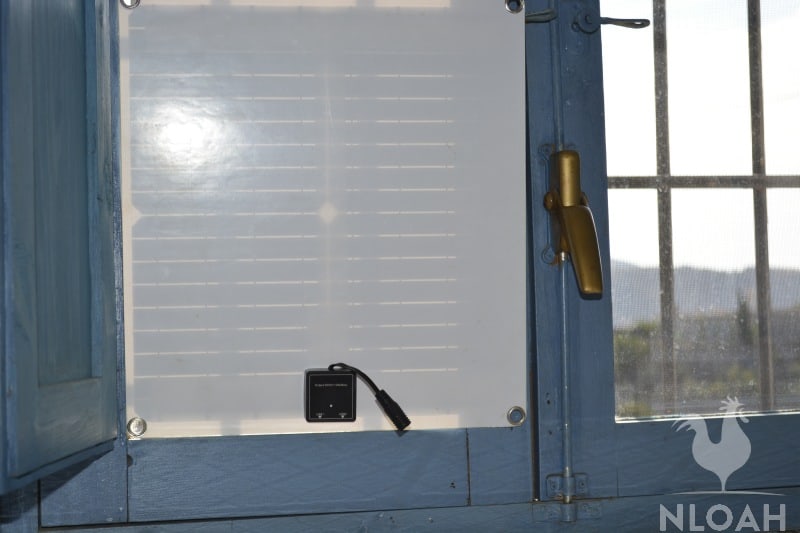
Power From Interior Light Sources
During the nighttime, we light our homes with light bulbs. Is this ambient lighting a suitable source to create electricity in a solar device? Yes – however, several factors affect their efficiency when used in this way.
Light Intensity
Our eyes tell us that the level of light indoors is like the levels outside. In reality, there is a huge difference between the light levels.
Lux levels are a method of quantifying the levels of light that enter the eye. Using Lux levels, it is possible to measure the difference. We would expect exterior light to measure approximately 100,000. 1,000 could be seen as the order of the level of light that would be found indoors.
Remember, it is the light levels that create electricity. Therefore, such a large difference in the light levels will translate into a large difference in electricity production.
Color of the Emitted Light
The sun emits light that covers the whole spectrum from blue to red, and into the infrared range. Interior lighting has a restricted range of the spectrum.
Solar panels are sensitive to the light spectrum and produce different levels of electricity from different colors of light.
The Size of the Panel or Device
Solar panels are constructed by combining a series of photovoltaic cells that each produce approximately 0.5 Volts.
Some panels for outside use will have 60 cells to create a usable voltage. This size is impractical for use indoors. It is simply too large.
Construction
Defects introduced to the panel as part of the construction process will reduce its efficiency when exposed to low-intensity light indoors.
Types of Bulb with the Most Power for Indoors Solar Devices
So, what light bulbs can produce the best wavelength and intensity of light that can be used to power a solar panel? Here are a few options for you to consider.
Incandescent Bulbs
An incandescent light bulb produces light from an electric current that passes through a fine wire. This is in a sealed glass chamber holding certain, specific types of glasses.
The light produced by these bulbs is close to the ultraviolet light from the sun. Provided that the light is bright enough, the lamp will produce electricity in a solar cell.
The bulb, or in some cases, several bulbs, will need to be supported and suspended approximately 20 inches from the panel. They must be 100w or more for increased efficiency.
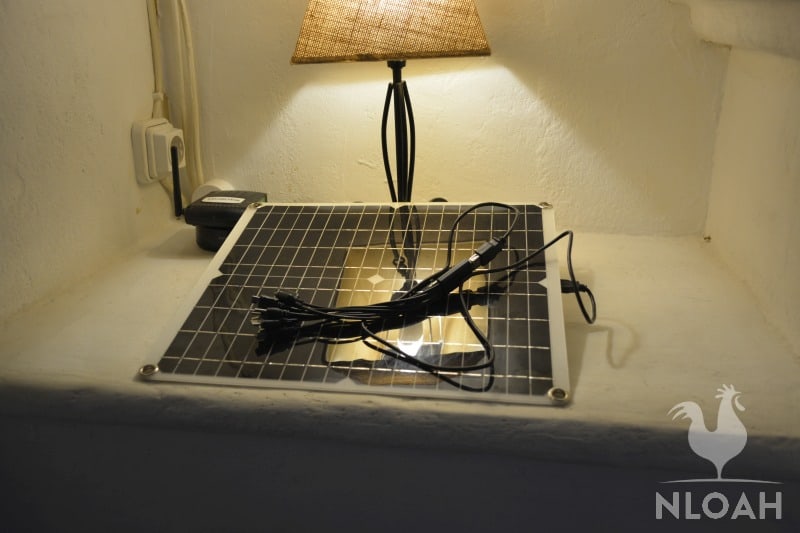
LED Light Bulbs
Light-emitting diodes within the LED bulb produce light when connected to an electricity supply. The more diodes within the light the higher the intensity of light is produced. This type of bulb is more energy efficient.
The light produced by these bulbs is in the long infrared and ultraviolet range. This wavelength is like that produced by the sun and will produce electricity in a solar cell.
An LED bulb or several bulbs should also be suspended approximately 20 inches above the cell.
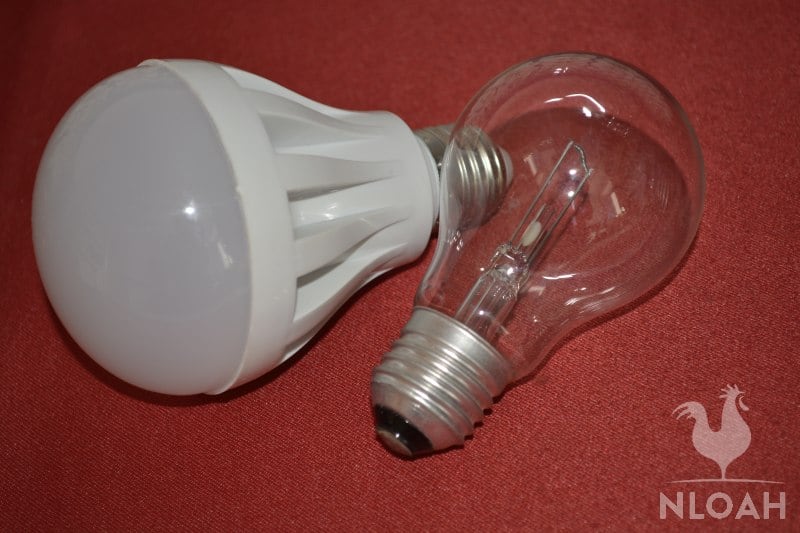
Which Bulb is Best to Use?
LED bulbs will generate a wider spectrum of light and use less energy to achieve the same intensity, making this a slightly better choice for the vast majority of people.
The smallest bulb size needed to generate power efficiently would be:
- Incandescent Watts 100
- LED Watts 20
Both bulbs will produce the same 1600 Lumens of light – however, the LED will consume less power.
Does This Really Work?
There are several smaller devices whose power requirements allow them to function from the power produced by an indoor solar panel:
- Charging cell phones
- Charging portable radios
- Security cameras
- Wi-Fi
- Solar lights
- Tablet
- E-reader
- Battery bank
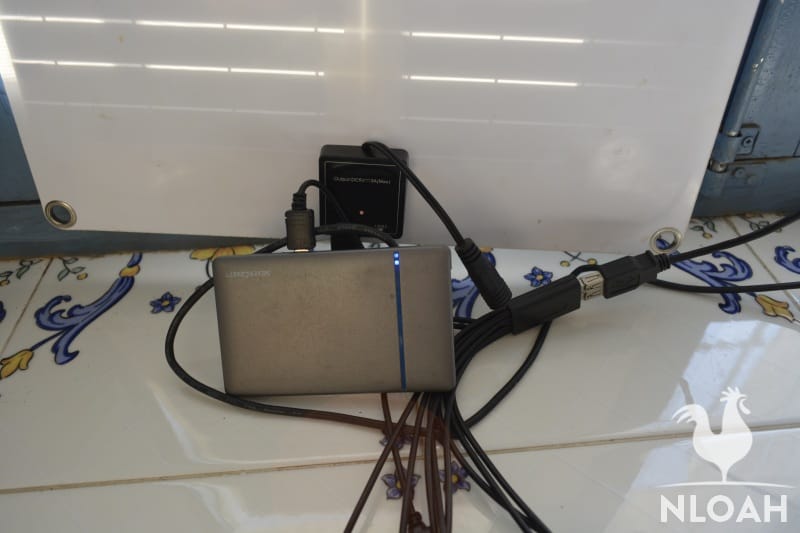
Devices with Integrated Solar
The leisure and camping industry has encouraged the development of devices that incorporate solar panels.
This simple design also means that they will also function indoors by placing them by a window or exposing them to the light from a light bulb. Using them in this way may take longer to achieve a full charge compared to when they are directly exposed to the sun, but it works.
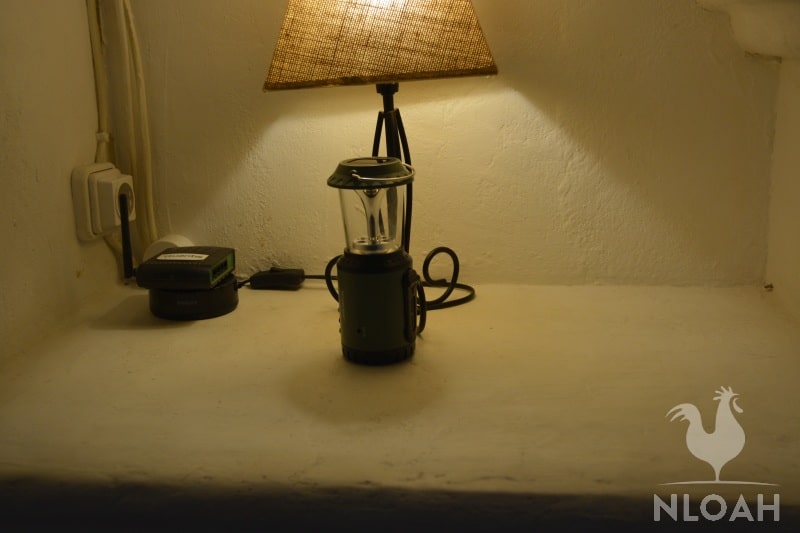
Typical devices include:
- Torches
- Radios
- Battery chargers
- Cell phones
- Solar lights
Conclusion
So do solar panels and chargers work indoors? Again, the answer is yes – but here’s a quick recap of why and how.
Solar panels and chargers work best indoors when placed in a window in full view of the sun. However, they may also produce electricity when exposed to the light that is emitted by interior lights.
These devices will create electricity indoors; however, due to limitations, they are not always the most efficient. But, this degree of inefficiency can perhaps be offset against their green environment credentials and the convenience of charging low voltage items in this way.
The size of the panels and chargers that are normally used indoors is a factor that limits the amount of electricity that will be generated.
Electricity production is also limited by the reduced intensity and frequency of the light that is found indoors. Not all light bulbs are the same. The more modern style of light bulb will produce increased levels of light needed for solar devices. They will also produce their light more efficiently.
Solar panels and chargers do work indoors. They will still produce power through a window even if there is no sun, although a reduced amount. Powering from a light bulb or several light bulbs does not need the sun at all.
Provided that we remember that there are limitations to their capability, the electricity that they do supply is very useful.

Gordon is a British homesteader established in Spain, growing large amounts of veggies and fruits. He also has a high degree of self-sufficiency as he is procuring his own water, wood, and solar energy.

This is a great topic! I love solar, will only get better as time goes on too! Been using using reclaimed solar (inside) for quite some time now! My solar calculator for around 15 years, and have never changed the battery. Do not remember ever using it outside in sun, but probably have! I usually turn on some lights around dark, otherwise I have a tendency to run into stuff. Last summer I charged my disposable e-cig with a small solar panel (inside) and worked OK, but not as fast as my solar generator. I recently saw a guy use panels in a barn with one small window using low light panels- claimed they were doing good? I think the use cases are good. Some shops and stores run lights 24/7 anyway. Use cases may improve with recently developed night panels. Thanks for the topic!
Are there specific types/ sizes of solar panels that work more efficiently in windows?
brilliant article my friend, easy to understand and very well explained, thank you , 10/10 🙂
I agree. If your using the lights anyway it’s definitely worth looking into.
If you happen to live in an apartment and aren’t facing the south you are definitely looking at significantly lower production from the sun.
In your article, it was stated that “The sun emits light that covers the whole spectrum from blue to red, and into the infrared range. Interior lighting has a restricted range of the spectrum.
Solar panels are sensitive to the light spectrum and produce different levels of electricity from different colors of light.”
With that being said, could a full spectrum GROW light (Fixtures and/or bulbs) for greenhouses/plants be an alternative source of light for charging solar panels INDOORS? I have several “SANSI” LED Full Spectrum, 15W Grow Lamp (200 Watt Equivalent)-Bulbs & 2 70W Grow Lamp (700 Watt Equivalent), PPF 112 umol/s LED Full Spectrum with Optical Lens for High PPFD.
I am a newbie to solar power so I’m trying to figure out alternative ways to charge my solar generator(s) via solar panels under adverse conditions that would prevent me from being able to utilize the sun outdoors (nuclear winter, cloud dimming/hazing, excessive heat/humidity in feels like temps of 110-120+(F) during our brutal summers. This may not be a factor with some solar panels but I’ve been reading that solar panels do not charge well in excessive cold & heat.
I would greatly appreciate input and/or suggestions.
If grow lights are full spectrum then, according to this article which I believe is correct, they should produce. What I would do is calculate the electricity use of the lights and compare to what might be the solar production. I don’t see how they would be efficient except when the lighting is being used for the light itself. Producing electricity would offset some cost. My guess is only about 20% of the cost would be offset but that is still a savings after equipment purchases eventually and that is purely a guess.
I got here kind of by accident, researching how plausible it is to power a nightlight from an indoor-mounted solar cell…. BUT…. You do all realize that shining a lightbulb onto a solar panel will always produce much less electricity than is used to power said lightbulb, making it completely pointless? No matter what type of lightbulb it is and what spectrum it produces. It is one thing to consider installing a solar cell indoors behind a window, where it will still generate electricity from sunlight coming in. But you can’t honestly expect to make surplus electricity from shining an electricity-consuming lightbulb onto a solar panel. That’s against the laws of physics. Sorry if my comment seems uncalled for, I just wanted to make sure that this is obvious to everyone.
Hey Roman,
Yes, the author did specify this is for testing purposes, and that this isn’t really useful. Thanks for pointing it out, though, maybe we can make it clearer!
Dan
Unless it’s meant that if you’re already running a light to illuminate a room and you place a solar panel in the room, you’ll get some of the electricity back. But then, such a gain would probably be negligible, and to have any real effect, you’d have to put the black panel right underneath the lightbulb, in which case it would lower the intensity of the illumination reaching the room. And off the energy expended to produce that lost illumination, you would never get back enough to make it justifiable. To simplify, if you had a 100 W lightsource and sacrificed 20 W of its power to illuminate a solar cell, that solar cell would never give you back more than 5-10 W, so it would make more sense to install an 80 W lightsource and not use the solar cell. You’d have the same amount of light output for less electricity used.